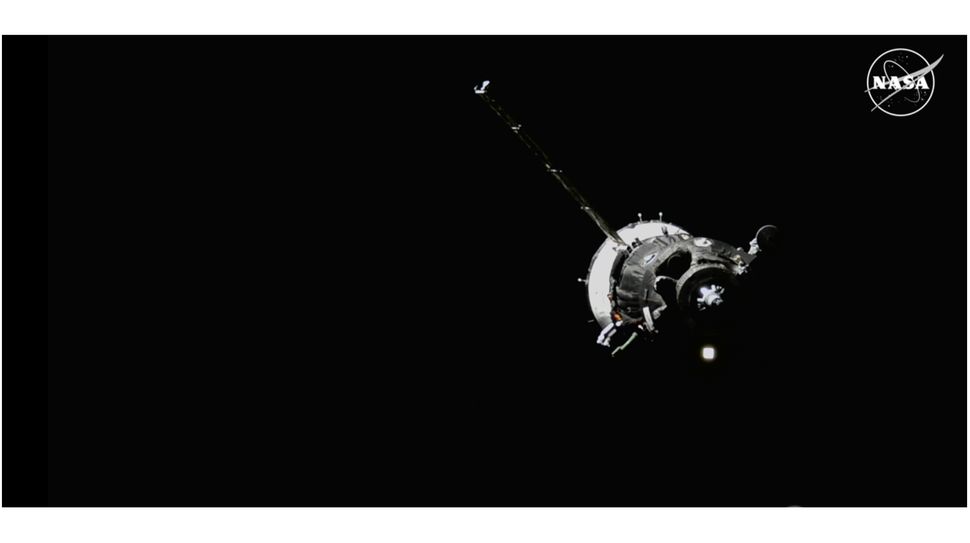
NASA astronaut, 2 cosmonauts arrive at ISS aboard Russian Soyuz capsule (video) (Image Credit: Space.com)
A NASA astronaut and two Russian cosmonauts arrived at the International Space Station (ISS) this afternoon after a brief orbital chase.
A Russian Soyuz spacecraft carrying NASA’s Don Pettit and Alexey Ovchinin and Ivan Vagner of the Russian space agency Roscosmos docked with the ISS today at 3:32 p.m. EDT (1932 GMT), as the two spacecraft flew 260 miles (418 kilometers) over central Ukraine. That was just three hours, and two orbits of Earth, after their launch atop a Soyuz rocket from the Russia-run Baikonur Cosmodrome in Kazakhstan.
The hatches between the Soyuz and the ISS are expected to open at 5:50 p.m. EDT (2150 GMT). You can watch that milestone live here at Space.com, courtesy of NASA; coverage begins at 5:30 p.m. EDT (2230 GMT).

Pettit, Ovchinin and Vagner will spend about six months aboard the ISS, as part of the orbiting lab’s Expedition 71 and 72 missions. They’ll come back to Earth next spring.
Related: Soyuz rocket launches new US-Russian crew of 3 to ISS (video)
Today’s launch was the fourth overall for the 69-year-old Pettit, the oldest active member of NASA’s astronaut corps. He first flew in November 2002, on the space shuttle Endeavour’s STS-113 mission, and has spent a total of 370 days off Earth so far.
Ovchinin now has four launches under his belt as well, all of them aboard a Soyuz. He has reached the ISS on three on them; the other liftoff, on Oct. 11, 2018, ended early due to a Soyuz rocket problem in flight. Ovchinin and NASA astronaut Nick Hague landed safely in their Soyuz spacecraft that day, less than 20 minutes after launch.
Vagner has been to space once before, spending about six months aboard the ISS in 2020.
Pettit, Ovchinin and Vagner are joining nine other people on the ISS — NASA astronauts Michael Barratt, Tracy Caldwell-Dyson, Matthew Dominick, Jeanette Epps, Barry Wilmore and Suni Williams, and Roscosmos’ Nikolai Chub, Alexander Grebenkin and Oleg Kononenko.
Wilmore and Williams were the first-ever crew for Boeing’s Starliner capsule, which returned to Earth uncrewed last weekend after suffering thruster problems in orbit. Wilmore and Williams will get a ride home on a SpaceX Crew Dragon capsule next February.
There are currently seven other people in orbit as well — three astronauts on China’s Tiangong space station and the four crewmembers of the private Polaris Dawn mission, who are living aboard a free-flying SpaceX Crew Dragon for the next few days. The total of 19 people in orbit is a new record, NASA officials said in today’s Soyuz launch broadcast.








